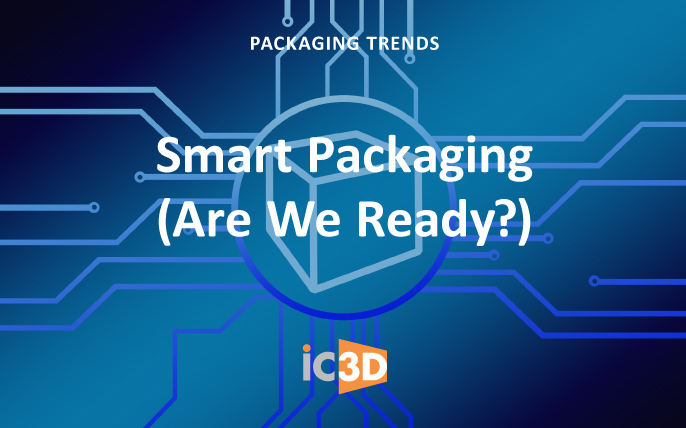As the consumer product supply chain becomes more sophisticated, we find new ways to make packages better. Sometimes the changes—like food safety or RFID tracking—have little impact on a package’s appearance. But other developments in smart packaging can have a profound impact on design. Consumer Product Companies (CPCs) need to be ready.
CPC brand managers’ lives are complicated. They have to juggle multiple design decisions for multiple products. Any of these can have a huge impact on sales. It’s tempting to ignore the design implications of smart packaging’s design implications. Given the high-stakes competition for shelf impact, that is a mistake.
How Does Smart Packaging Affect Design?
In some respects, it already has. As we discussed in a previous blog, legally mandated nutrition requirements are already creating design headaches for CPCs. However, a package’s ability to communicate marketing information to a consumer is the biggest potential hurdle.
 In the mid-2000s, marketers touted QR Codes as a way to combine print with mobile technology. Scanning 2D barcodes with a smartphone would take users to a web experience that would—in theory—benefit consumer and producer alike.
In the mid-2000s, marketers touted QR Codes as a way to combine print with mobile technology. Scanning 2D barcodes with a smartphone would take users to a web experience that would—in theory—benefit consumer and producer alike.
The first iteration of QR Codes was a marketing failure. Smartphone users resisted the multi-step process. Most of the mobile results were disappointing, to say the least. Packaging designers breathed a sigh of relief, thinking they would’t need to use these ugly things in their work.
Their relief is premature. QR Codes are passé, but mobile scanning is not. SnapTags and other scanable brand images are making inroads. So is Augmented Reality. It’s only a matter of time before these become prevalent in consumer packaging, offering everything from phone purchase discounts to reordering opportunities. (Imagine a decorative box of chocolates, like those I described in a past blog, with a tasteful, scanable image making it easy to order more on a phone.)
While the design impact of some of these elements themselves may be minimal, the instructions for using them is not. Even the relatively unobtrusive SnapTag requires instructions and (above all) a printed incentive to make the scan. Each of these consumes precious real estate on a product package.
Other smart packaging choices also have a design component. Materials that protect contents from heat or cold or UV rays can impact appearance. That means the designer (and all his or her design decision makers) have to know exactly what that impact will be to its overall look and shelf appeal.
Virtual Reality to the Rescue
Fortunately, packaging designers and CPC brand owners do have a way to visualize these smart packaging decisions before production. Creative Edge Software’s iC3D lets multiple decision makers see the results of a scanable image—and its instructions—on a virtual model of a complex product package. It can also simulate surfaces and materials required to keep products colder, fresher, or less breakable. It could even be used to market test a visible security element, like the detachable gadgets on bottles of expensive liquor.
Smart packaging is a growing reality for CPCs and their supply chain partners. To stay efficient and agile, these companies must be equally smart in their choice of design tools.






